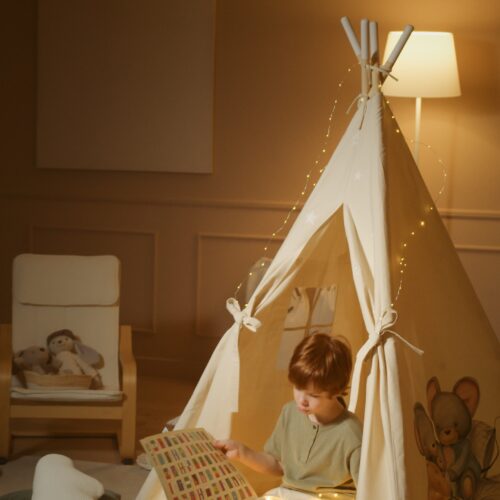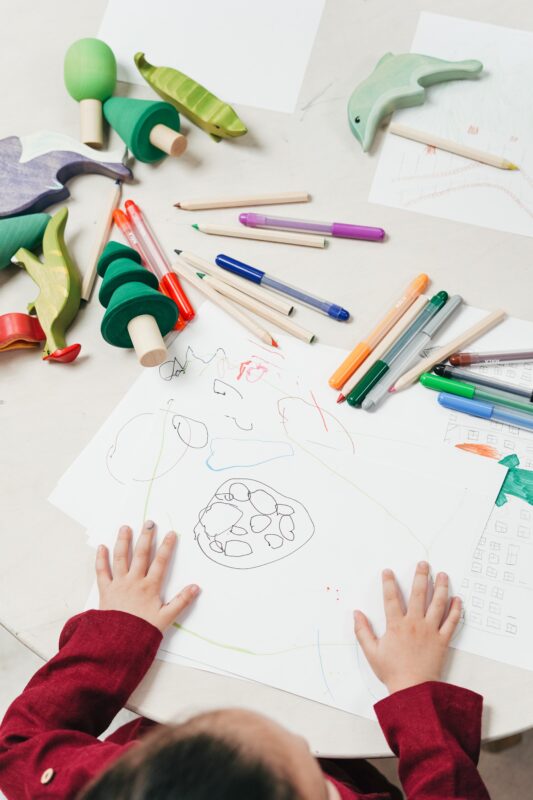
Baby Lying on White and Brown Hammock, Photo taken by Artem Podrez, from Pexels
In a world characterized by stigma against childish ways in old age, and a society that pushes adulthood at such a young age, America puts up a nice contrast to the ways of Japanese custom, in which treating others as children is not only acceptable, but commonplace. The ambiguity of and failure to concretely define the Japanese concept of amae has taken American and other non-Japanese researchers and philosophers by the neck. Its most common definitions, like that of Japanese psychiatrist Doi, claim it is a child’s desire to be close to others once they recognize their own individual existence (Behrens). Yet, what asks to be examined most is arguably the element of amae that intentionally emphasizes the equality of all ages, and almost purposefully treats others as children. Some habits die all too hard- like popping bubble wrap or running around the grocery store riding on the cart like a spaceship. Often times, these habits sticking around evoke childish sentiment. But what is so wrong about this? In the words of Dr. Seuss, “ninety percent of children’s books patronize the child and say there’s a difference between you and me, so you listen to this story. I, for some reason or another, don’t do that. I treat the child as an equal.” Amae is largely characterized by a sense of equal-ness, no matter age, but a stroll through the right corner of a local Barnes and Noble tells an American mother things like “Your Child is Not Your Equal: Why You Have to Be the Boss,” or “Parenting Your Out of Control Child.” Paradoxically, these uptight parenting novels instructing adults to enforce boundaries on their child, or foster a home with little to no “fun” use covers with bold colors and enticing fonts, all emblematic of the child in adults. What one deems “childish” usually coincides with what one also desires or enjoys engaging in, proving that happiness and a sense of youth go hand in hand.
Jackie Urbanovic, a New York Times Bestselling Author and Illustrator, exclaims that her career in illustrating originated from her innate “desire to make things.” She attributes much of her success in her career to her upbringing, praising her parents for recognizing her talents but also offering up criticism, the way a friend of colleague would. As Jackie grew older she realized that having this level of support was in reality a great privilege, and she recognizes that “it was only later in [her] career that [she] met people whose parents forbid them from pursuing art because they thought it was a crazy idea. [She] thought it was normal for your parents to want you to follow your dreams.” Understanding why the Japanese value elements of childhood following us to adulthood comes from studying parent-child relationships. What better portion of society to consider in the debate on psychologically vital reliance than mothers? Sapporo Mothers does just this, as 40 mothers of Sapporo, a city in Northern japan, were studied. 20 of these mothers originated from lower income homes, while the other 20 came from higher economic standings. However, even the sacred object that divides humans the most: currency, could not fathom coming between the mother- offspring bond that amae creates. If it is not socio economic status affecting amae, then where does this spectrum magically come from? Japanese philosopher Watanabe states that “amae in adulthood represents part of the complex social system” (1992). Similarly, Japanese philosopher Maruta argues that “mutually comfortable amae,” is “a key to successful socialization in Japan” (1992). Jackie Urbanovic offers up some thoughts as to why this parent-child bond is so important to fostering a successful child as she acknowledges that “when we’re children, there is so much in our lives that is out of our control.” Creating our own realities, beginning at a young age, is a way Urbanovic believes in imagination building. “Storytelling comes naturally to kids. Leading them to writing or drawing those stories opens the world for them,” concludes Urbanovic.

Kid On White Table Painting, Photo taken by cottonbro, found on Pexels
A child’s ability to story-tell manifests his or her imagination and sense of self, allowing them to “know the thrill of pleasing an audience.” In the words of Vanessa Boris, “storytelling forges connections among people, and between people and ideas.” Storytelling is one of many examples of amae in action, in the sense that it “stories move us to be more empathetic and generous.” (Zak). It is through stories that one understands another, this is how “relationships with strangers are formed.” Emotionally engaging stories cause the brain to synthesize oxytocin, the neurochemical responsible for empathy in humans. Therefore, encouraging storytelling skills in children breeds a sense of compelling-ness as they grow older, fostering their ability to influence others. The desire to influence others, however, then proposes the possibility of manipulation. Manipulation is described as the second form of amae, second to the affectionate form. While imaginative children grow into leading adults, manipulation poses threats to “ethical leadership,” as outlined by University of Jyvaskyla professors. Their study specifically outlines manipulation of business officials and managers on those below them in the workplace. A “humorous” story told by “Manager B” goes as follows:
“In Africa in the 70s they served a good breakfast every morning at this hotel. Outside the hotel conditions were so so, but back at the hotel everything was fine. However, one morning there was no breakfast, and so a guest began to wonder what was going on, and went and took a peek into the kitchen- and found that they cook had been hanged.”
“Manager B” hoped that this story would motivate his or her workers to endure through less than ideal working conditions, yet the story itself is really just gruesome and uses scare tactics. Serving as an example of wasted story-telling “skills,” Manager B abuses power in a sense, not guaranteeing as positive of an outcome. What is missing from the equation of manipulative amae? Trust.
The Japanese concept of amae takes on many shapes and forms, some more positive than others, but commonly bounces off the idea of equity and helping those in need whether they request it or not. However, does such a mindset breed dependency and childish behavior in old age? Whether it does so or not, “inspiration and story ideas are all around us all of the time. It just takes cultivating another form of observation to notice them” (Urbanovich). It is so crucial that parents utilize their affectionate bond with their children to foster the trust which will allow them to imagine and succeed, like Jackie. After all, “the reality is that we are all storytellers. Human beings live and breathe stories. It’s how we learn, how we pass on our experiences, how we entertain each other.” Children lack control, but amae allows them to gain control, starting in places even as simple as storytelling.

Woman Reading a Book with a Girl While Sitting on a Couch, Photo taken by Mikhail Nilov, found on Pexels
 NOLAbeings
Multimedia artist Claire Bangser created NOLAbeings as a portrait-based story project that marries...
NOLAbeings
Multimedia artist Claire Bangser created NOLAbeings as a portrait-based story project that marries...
 Data corner: Adobe Suite (create a PDF, social media graphic, presentation, edit a photo and video
Data corner is where you go to work with analytics and top tech skills. It takes on everything from PERL and SQL to Canva and Sprout Social.
Data corner: Adobe Suite (create a PDF, social media graphic, presentation, edit a photo and video
Data corner is where you go to work with analytics and top tech skills. It takes on everything from PERL and SQL to Canva and Sprout Social.
